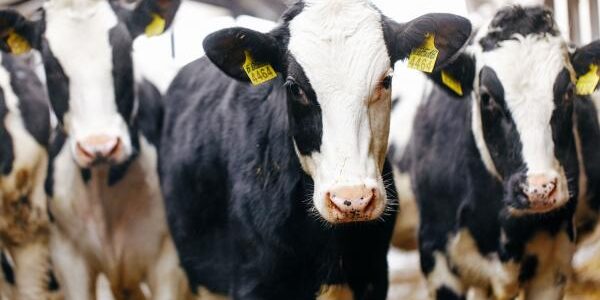
As of August 1, 2025, there were 2 million 151.5 thousand head of cattle in the private and industrial sectors of Ukraine, which is 18 thousand head (-0.8%) less than a month ago and 8% less than a year ago, according to the Milk Producers Association, citing data from the State Statistics Service.
The industry association noted that the number of cows currently stands at 1.14 million, which is 5,800 (-0.5%) fewer than at the beginning of July this year and 9% fewer than a year ago. About 43% of animals are kept on industrial farms, and 57% on private farms.
The industrial sector has 923,500 head of cattle, which is 2,000 head more (+0.2%) than on July 1, 2025. The number of cows is 381,600 and has decreased by 500 head (-0.1%) over the last month. Over the past year, the number of cattle on enterprises has decreased by 1.7 thousand heads (-0.18%), but the number of cows has increased by 1.4 thousand heads (+0.4%).
There are 1.228 million head of cattle in the private sector, which is 20 thousand head less (-1.6%) compared to a month ago. As of early August 2025, the number of cows in private households was 758,800, which is 5,000 (-0.7%) less than a month ago. Over the past year, the number of cattle in private households has decreased by 192,000 (-14%), and the number of cows has decreased by 108,000 (-12%).
AVM analyst Georgiy Kukhaleishvili, whose words are quoted in the report, noted that the decline in cattle numbers is a long-standing problem in Ukraine due to the lack of an effective state program to support dairy farming, and the war has only exacerbated the situation. Currently, there is a sharp decline in livestock numbers in the east and south, with agricultural enterprises relocating cows from the Sumy, Dnipropetrovsk, and Kharkiv regions to safer regions in western and central Ukraine amid intensified Russian missile and bomb strikes on border and frontline settlements, the expert comments on the situation.
“Most farms in Ukraine were built in the 1970s and 1980s, and they no longer meet the requirements for keeping animals. The lack of premises suitable for keeping cows creates the conditions for a further reduction in livestock numbers. Many farmers are not investing in increasing their cow herds during the war because they are experiencing a shortage of working capital,” the industry association noted.
The UBA reminded that according to the study “Ukraine: the impact of war on the profitability of agricultural production,” conducted by the Ukrainian Agribusiness Club and the Ministry of Agrarian Policy with the support of the Global Facility for Disaster Reduction and Recovery (GFDRR), farmers’ production costs are rising faster than prices for finished products due to rising feed and electricity prices, as well as the devaluation of the hryvnia and a decline in the purchasing power of the population.